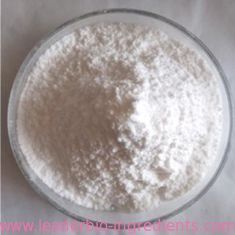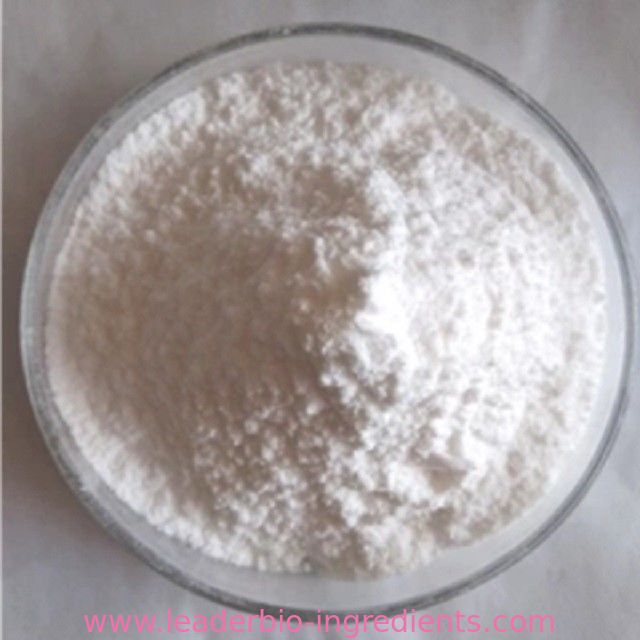
China Northwest Factory Manufacturer Dextran CAS 9004-54-0 For stock delivery
-
Purity99.9%
-
UseHealth Care
-
OriginChina
-
Package1KG/Tin 25KG/Drum*Carton
-
ManufacturerXI'AN LEADER BIOCHEMICAL ENGINEERING CO.,LTD
-
Place of OriginCHINA
-
Brand NameLeader
-
CertificationISO,GMP,SGS,HALA,KOSER,HACCP
-
Model NumberLD
-
Minimum Order Quantity25KGS
-
PriceNegotiate Depend on order quantity
-
Packaging Details25KG/Drum
-
Delivery Time2-3 working days
-
Payment TermsWestern Union, MoneyGram, T/T, L/C
-
Supply Ability10MTS/Month
China Northwest Factory Manufacturer Dextran CAS 9004-54-0 For stock delivery
| Dextran Basic information |
| Dextran Chemical Properties |
| Melting point | 483 °C (decomp) |
| alpha | 198 º |
| refractive index | 185 ° (C=6, H2O) |
| storage temp. | 2-8°C |
| solubility | H2O: soluble50mg/mL, clear to very slightly hazy, colorless to faintly yellow |
| form | Solid |
| color | White to slightly off-white |
| PH | 2 - 10 |
| Water Solubility | Soluble in water, dimethyl sulfoxide, ethylene glycol and glycerol. |
| Merck | 14,2948 |
| Stability: | Stable. Keep dry. Incompatible with strong oxidizing agents. |
| EPA Substance Registry System | Dextran (9004-54-0) |
| Safety Information |
| Hazard Codes | Xn,Xi |
| Risk Statements | 20/21/22-36/37/38 |
| Safety Statements | 24/25-37/39-36-26 |
| WGK Germany | 2 |
| RTECS | HH9230000 |
| F | 3 |
| TSCA | Yes |
| HS Code | 39139000 |
| Toxicity | LD50 oral in rat: > 3gm/kg |
| MSDS Information |
| Provider | Language |
|---|---|
| Dextran | English |
| SigmaAldrich | English |
| ACROS | English |
| Dextran Usage And Synthesis |
| Description | Dextran, a glucose polymer composed predominantly of ol-1,6-glucopyranosidic linkages, is produced from sucrose by Leuconostoc mesenteroides and related organisms and from dextrins by other bacteria. Dextran is used in a bead form to aid in bioreactor applications, some size-exclusion chromatography matrices and in osmotic stress technique study involved in biological molecules. It can be used as a stabilizing coating to protect metal nanoparticles from oxidation. Dextrans are long-chain glucose polysaccharides of various relative molecular masses. Dextran 70 (relative molecular mass 70 000) is retained in the intravascular space where, like albumin, it contributes to the colloid oncotic pressure of plasma. Unlike albumin, dextran 70, when given in large amounts, prevents platelet aggregation and facilitates fibrinolysis. |
| Dextran Structure | Dextran is an α-D-1,6-glucose-linked glucan with side-chains 1-3 linked to the backbone units of the Dextran biopolymer. The degree of branching is approximately 5%. The branches are mostly 1-2 glucose units long. Dextran can be obtained from fermentation of sucrose-containing media by Leuconostoc mesenteroides B512F. A fragment of the Dextran structure is illustrated in Figure 1. Fig. 1: Dextran is a glucose polymer in which the linkages are predominantly of the α(1,6) type. The degree of α(1,3) branching is generally less than 5% and decreases with decreasing molecular weight |
| History | In the early 1940's, at the same time as Stacey and his associates in Birmingham were studying bacterial dextrans and Hehre and colleagues in the USA were pursuing the dextran producing activity of cell-free extracts of Leuconostoc , a young Swedish biochemist, B. Ingelman, at the Department of Biochemistry and Physical Chemistry, University of Uppsala began probing the polysaccharides and proteins of sugar beet juice. One of the critical episodes was the discovery of dextran in an infected sample of the juice. This initiated a series of investigations on the polysaccharide. At the end of 1942, a recently qualified M.D., A. Grönwall, joined the laboratory to study tuberculin. Considerable effort was being devoted at the time to the freeze-drying of blood plasma for military medicine. Within the space of months, Ingelman and Grönwall had stumbled on the idea of using a hydrolyzed dextran as a plasma substitute. After studies on the partial hydrolysis, fractionation, and extensive biological studies, a Swedish pharmaceutical company adopted the project in 1943, and later that year, preliminary clinical trials began. In 1944, under the direction of the surgeon, G. Bohmansson, extensive clinical trials were started at the Regional Hospital in Örebro. The dextran used at that time was derived from Leuconostoc mesenteroides , strain 7E, and was slightly more branched than the present one. By 1947, about four years after the innovation, a 6% solution of a dextran fraction had been approved for clinical use in Sweden and, shortly thereafter, in the U.K., an achievement that would be inconceivable under the present regulatory climate.The product was gradually improved and was designated Dextran 70. Samples of the Swedish product were soon tested clinically in the USA. Dextran 70 is generally marketed as a 6% solution in normal saline and as such continues to maintain its position worldwide as the plasma volume expander of choice. It is recommended for the treatment of shock or impending shock due, for example, to hemorrhage, burns, surgery or trauma. Dextran 70 also reduces the risk for thrombosis and numerous studies testify to its value in significantly reducing the risk of post-operative fatal pulmonary emboli. |
| Uses |
|
| Specification | Dextran 70 powder Pharmaceutical grade (for injections) |
| Diverse Applications |
Pharmacosmos Pharmaceutical Quality Dextran 1 |
| Production Methods | Dextran for clinical and technical products is produced in most developed countries throughout the world. In the West, most producers use the Leuconostoc mesenteroides NRRL B-512(F) or B-512 strain for the fermentation. In other parts of the world, alternative strains appear to be used. Most major producers of dextran employ a process based on the batchwise culture of Leuconostoc in the presence of sucrose. The viscous culture fluid is then precipitated in ethanol or methanol, whereafter the native dextran obtained is hydrolyzed in dilute acid and the desired dextran is isolated by fractionation. Although the present state of the art offers alternative methods of producing defined fractions, most producers are still operating a procedure introduced about 35 years ago. In introducing any change, a producer must be convinced that, not only must the new process be more efficient in man-power and materials, but the final product must conform in every respect with the medical requirements for safety and efficacy. The organism, Leuconostoc mesenteroides NRRL B-512(F), is a member of the Lactobacillaceae family, genus Leuconostoc and species mesenteroides (134). The organism produces spherical or ovoid cells and classifies as a gram-positive facultative anaerobe. Apart from dextran and lactic acid, it produces, inter alia , carbon dioxide, ethanol, mannitol and acetic acid. |
| Dextran Safety | Dextran has been used in numerous products for human use for decades Products include both IV, IM, oral, and topical administration. These products have typically been used globally including US and Europe. Examples include Dextran use for plasma volume expansion, in numerous eyes drops, and oral products like Spasfon and Opalmon. For decades Dextran has had the Generally Recognized As Safe (GRAS) label from the US FDA, which was renewed in 2013. (Link to article). The established use of dextran through decades of human use in numerous products with different administration forms clearly establishes the low risk profile of Dextran. This is well known to competent authorities around the world, and it is taken into consideration when the regulatory authorities are establishing their toxicological, preclinical and clinical requirements. |
| Description | Dextrans are glucose polymers produced by bacteria linked in an α-1,6 chain and having an α-1,3 or α-1,4 branch about every fifth residue. The specific positioning of the branching varies by the bacterium producing it. The molecular weights of these chains generally are 40 or 70 kDa (dextran-40 and dextran-70, respectively), and the compounds work via an osmotic gradient similar to the colloids and hypertonic crystalloid solutions. Dextrans have a longer intravascular residence time than albumin, which limits interstitial edema. As with the crystalloids and other colloids, the dextrans have no oxygen-carrying capacity. Furthermore, because they are bacterial products, the dextrans have the potential to be potent antigens and induce anaphylaxis. |
| Chemical Properties | white crystals or powder |
| Originator | LMD 10%,Abbott,US,1967 |
| Uses | Dextran is a polysaccharide composed of glucose molecules used as an antithrombotic to reduce blood viscosity and as a volume expander in anemia. Studies show that it inhibits the mannose receptor-med iated clearance of tissue-type plasminogen activator (t-PA). |
| Uses | also available in pharma grade |
| Uses | exhibit borad spectrum of biological activities, with very low anticoagulant capacity: they activate lipoprotein elimination by lipase stimulation, inhibit cell proliferation in vascular wall, regulate transport of plasmatic proteins and inhibit depositi |
| Uses | antiinflammatory veterinary drug |
| Uses | dextran is a polysaccharide with water-binding properties. It is also used to control product viscosity. Some studies indicate a capacity to enhance the anti-aging activity of formulations containing weak acids, as well as to reduce possible skin irritation arising from such acids. |
| Definition | dextran: A glutinous glucose polymerproduced by certain bacteria. Itcan be made by fermenting sucrose(cane sugar) and is used as a thickeningagent, as a stabilizer in ice cream,and as a substitute for plasma inblood transfusions. Esters with sulphuricacid yield sodium salts thatare employed as anticoagulant drugs. |
| Manufacturing Process | Sucrose is subjected to the action of the bacterium Leuconosfoc mesenteroides B 512 and the crude, high-molecular weight dextran thus formed is hydrolyzed and fractionated to an average molecular weight of about 40,000 as measured by light-scattering techniques. |
| Brand name | Gentran 40 (Baxter Healthcare). |
| Therapeutic Function | Plasma extender |
| Mechanism of action | |
| Safety Profile | Suspected carcinogen with experimental carcinogenic data. When heated to decomposition it emits acrid smoke and fumes. See also other DEXTRANS. |
| Veterinary Drugs and Treatments | Dextran 70 is a relatively low cost colloid for the adjunctive treatment of hypovolemic shock. Hetastarch is the more commonly employed synthetic colloid used today. |
| Purification Methods | Solutions of dextran keep indefinitely at room temperature if 0.2mL of Roccal (10% alkyldimethylbenzylammonium chloride) or 2mg phenyl mercuric acetate are added per 100mL solution. This inhibits mould growth. [Scott & Melvin Anal Biochem 25 1656 1953.] |
| Dextran Preparation Products And Raw materials |
| Raw materials | Ferric chloride-->Styrene-->Sucrose-->Platinum-->Agar-->COTTONSEED OIL-->WEAKLY BASIC ANION EXCHANGE RESIN-->Iron-dextran |
